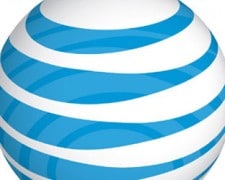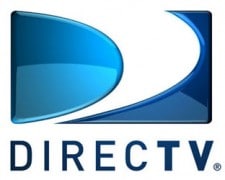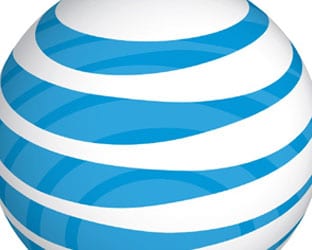
 In Yankee Group’s newest report, “AT&T DirecTV Buy Kick-Starts Multiscreen Video Battle,” Principal Analyst Rich Karpinski and Senior VP of Research Wally Swain evaluate how AT&T’s announced acquisition of DirecTV will affect the mobile ecosystem:
In Yankee Group’s newest report, “AT&T DirecTV Buy Kick-Starts Multiscreen Video Battle,” Principal Analyst Rich Karpinski and Senior VP of Research Wally Swain evaluate how AT&T’s announced acquisition of DirecTV will affect the mobile ecosystem:
AT&T’s announced acquisition of DirecTV indicates a significant market shift toward assembling the fixed, fixed wireless, satellite, mobile and content assets necessary to deliver—and monetize—video content wherever customers want it. The opportunity will define mobile’s next wave. If the AT&T-DirecTV deal is approved, the combined companies would have nationwide satellite TV reach and ultimately cover 70 million U.S. customers with fixed broadband services, significantly expanding AT&T’s service reach. AT&T already serves 116 million mobile customers (in total reaching nearly 300 million potential subscribers via high-speed LTE mobile networks) and now has even greater flexibility in how it delivers an array of services—especially video services—to customers’ TVs, computers, tablets and smartphones.
Highlights:
– AT&T will become a video programming power broker. AT&T is already a TV player via its U-verse service, but DirecTV is a content juggernaut—perhaps best exemplified by its $1 billion annual Sunday Ticket agreement with the NFL. Access to exclusive programming and the scale and relationships to cut favored deals with content providers will be crucial to compete in the emerging multiscreen video market.
– Mobile network impact will be muted. Unlike rival Dish Network, which bought and has been dangling valuable 4G spectrum in front of an array of industry players as a deal incentive, DirecTV has stayed out of the mobile business (though it does have some Latin America spectrum holdings). AT&T will be able to market and bundle mobile services to new customers, but this is a decidedly different kind of deal than the spectrum-driven pairings and buyouts of recent years.
– This deal is about more than traditional satellite offerings or pay TV packages or fixed broadband services. The focus instead should be on how well these two companies can define and ultimately drive the still-nascent multiscreen video market. And while DirecTV doesn’t bring mobile spectrum, networks or customers to that endeavor, AT&T doesn’t need them. Those are its strengths. Rather, the best way to view the deal, and track its ultimate success or failure, is to look at how AT&T blends the capabilities of both companies into something entirely new—and whether it can beat rivals (from Verizon/ Redbox to Comcast/Time Warner to Apple, Google and Amazon) to the punch.
– Multiscreen video is a new market, not just the extension of old businesses (like satellite or cable TV or even OTT video) onto more devices and locations. There’s video content, and there’s customers. The goal of the AT&T/ DirecTV combo is to worry more about simply bringing those two worlds together and less about exactly what underlying network technology makes that happen. Fiber, fixed wireless, satellite, mobile network, connected car—it doesn’t matter. Customers want a seamless multiscreen video experience. AT&T sees its job these days as getting video to customers regardless of the network or end device.
— The FCC is now firmly in the hot seat. Already facing anti-consumer criticism for its proposed Net neutrality rules, the regulatory body now has multiple proposed (AT&T/DirecTV, Comcast/Time Warner Cable) and would-be (Sprint/T-Mobile) mergers in front of it that raise major competitive concerns. This summer the FCC must not only rule on individual deals but set philosophical and legal underpinnings that will shape the telecom market for decades to come.
AT&T’s announced acquisition of DirecTV indicates a significant market shift toward assembling the fixed, fixed wireless, satellite, mobile and content assets necessary to deliver—and monetize—video content wherever customers want it. The opportunity will define mobile’s next wave.
According to Yankee Group’s Global Fixed Market Forecast, March 2014, U.S. digital TV subscribers totaled 104 million in 2013, of which 34 million were satellite subscribers. Revenues for the U.S. digital TV market were $93.9 billion in 2013, of which satellite made up $31.2 billion, or 33 percent. Overall digital TV revenues are projected to grow at a 7 percent CAGR through 2017, while satellite revenues are projected to grow at a 3.5 percent CAGR through that period. According to May 2014 data from the M&A KnowledgeBase from Yankee Group parent 451 Research, the DirecTV deal is AT&T’s 10th acquisition since Jan. 1, 2010. In that same time frame, Verizon made eight deals, while Sprint and T-Mobile made three each.
AT&T focused a good portion of the deal value on cost savings, signaling an expected $1.6 billion annual run rate in cost synergies within three years. But the clear upside is in new revenue generated by a strategic combination of assets, relationships and customers to build an altogether new kind of multiscreen video provider—an opportunity that mobile operators have been slow to address but that now suddenly moves into the spotlight.
Notably, the deal comes on the heels of Comcast’s $45 billion proposed acquisition of Time Warner Cable. Both the AT&T/DirecTV and Comcast/Time Warner Cable pairings require regulatory approval at a time when the FCC is facing strong calls not to bend to corporate interests, both in its ongoing, high-profile Net neutrality rulemaking and in evaluating the merger deals before it (including yet another would-be merger: Sprint and T-Mobile). Those deals and how the FCC tackles them will define how the U.S. telecom market works for decades to come. If the deals go through, AT&T will add 26 million DirecTV video subscribers to its nearly 6 million U-verse customers, trumping Comcast/Time Warner Cable’s combined 30 million cable TV customers.
The deal has implications outside the U.S. as well. DirecTV’s Latin American business has more than 18 million subscribers, including all Sky Mexico customers, and is DirecTV’s fastest growing market with lots of room to grow (pay TV penetration in Latin America is only 40 percent, the companies said).
Notably, and unlike in the U.S., DirecTV also holds spectrum and operates LTE networks in the region. Meanwhile, for AT&T, the deal continues to show that it’s looking for business opportunities outside its traditional U.S. fixed footprint—a strategy it was rumored to be pursuing earlier this year in exploring acquisition targets among European-based multinational providers, most notably Vodafone.
Upon announcement, the deal itself was roundly criticized as uninspired, said the report, in particular by financial analysts who saw only two traditional—and relatively low-growth—businesses combining for cost and non-strategic reasons. We’d contend that’s a misread. This is about more than traditional satellite offerings or pay TV packages or fixed broadband services. The focus instead should be on how well these two companies can define and ultimately drive the still-nascent multiscreen video market. And while DirecTV doesn’t bring mobile spectrum, networks or customers to that endeavor, AT&T doesn’t need them. Those are its strengths. Rather, the best way to view the deal, and track its ultimate success or failure, is to look at how AT&T blends the capabilities of both companies into something entirely new—and whether it can beat rivals (from Verizon/Redbox to Comcast/Time Warner to Apple, Google andAmazon) to the punch. That’s less pedestrian and far riskier than the initial mainstream read-out of the deal portends—but it’s also potentially a bigger payoff.





